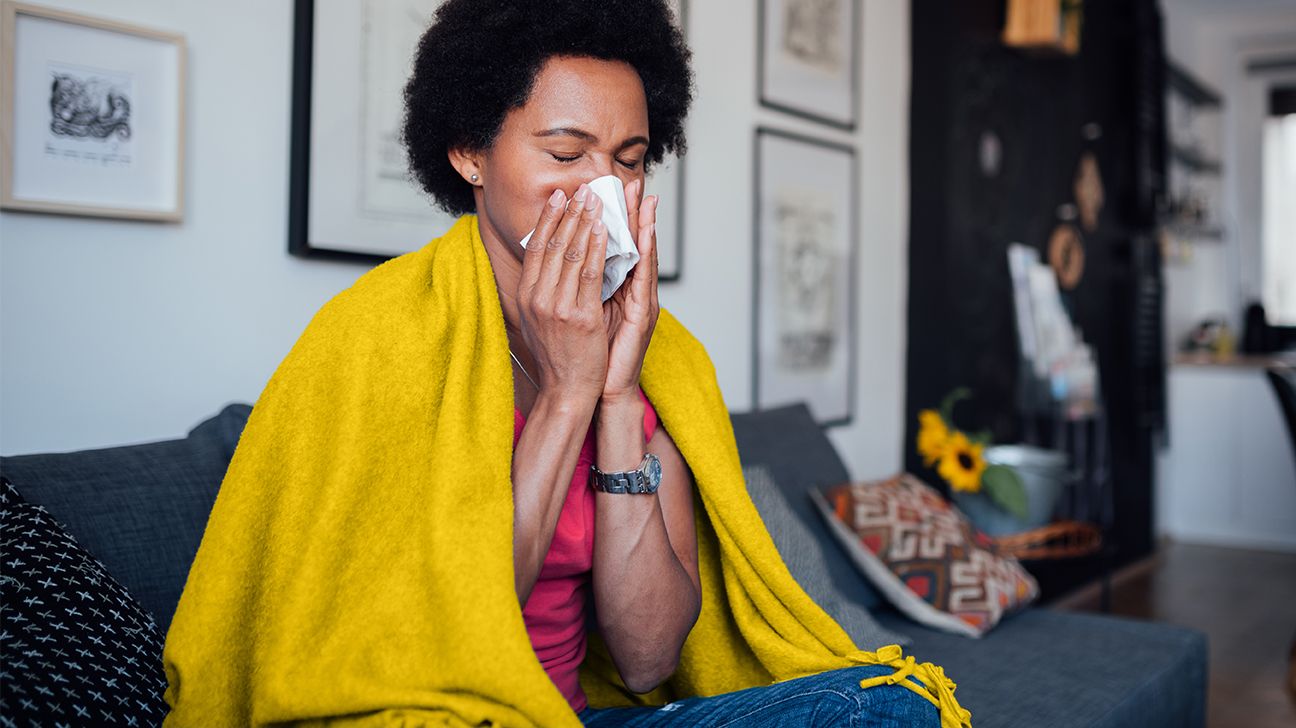Colds and allergies share many symptoms, so it may be tricky to know what’s causing those sneezy, sleepy, stuffed-up feelings. Luckily, there are some key signs that can help determine a diagnosis and get you on the road to recovery.
But remember: If something just doesn’t feel right, see a medical professional to get everything sorted out.

Sure, they may share some symptoms, but colds and allergies are like apples and oranges: While the common cold is caused by a virus, allergy symptoms are immune system responses to allergens like pollen, dust, or Fluffy’s dander.
The easiest way to tell the difference between the two is by how long they last — which, unfortunately, doesn’t help when the symptoms first strike. A common cold usually lasts no longer than 10 days, while allergies can pester people for months on end.
Seasonal allergies usually bloom around the same time every year (hellloo, spring!), while colds are more prominent in the winter and fall. No surprise there.
Still, each illness has serious contenders for worst symptom ever. With a cold, coughing and congestion are the main event, whereas itchiness of the mouth, eyes, and throat is an indicator of allergies.
Each is also associated with a certain type of mucus. (Gross, we know. Just hold on to those tissues!) A cold usually comes with yellowy mucus, while people with allergies deal with thin, watery snot.
Other symptoms unique to the common cold are muscle aches, fatigue, and fever, whereas an all-day sneezefest (gesundheit!) usually points to pollen.
Feeling under the weather? Here’s a guide to help differentiate the common symptoms of the two pesty illnesses.
Note: If you have any of these symptoms during the COVID-19 pandemic, get tested as soon as possible and isolate yourself to protect others while you await your results.
Common cold:
- congestion
- cough
- low grade fever
- mild body aches or headache
- sore throat
- sneezing
- stuffed-up or runny nose
Allergies:
- cough
- fever
- itchy eyes
- mild aches and pains
- mild fatigue
- runny or stuffy nose
- sneezing
- sore throat
Figuring out what’s causing you to stay under the covers is only half the battle. Here’s what you can do to help prevent a cold (and other contagions):
- Frequently wash those hands.
- Wear a face covering.
- Disinfect high-touch areas frequently.
- Stay away from others — colds are contagious, unlike allergies.
If it’s too late and the sniffles are already a-comin’, get plenty of rest and fluids, try an over-the-counter cold medicine, and eat some warm soup to soothe your throat.
As for allergies, avoiding allergens is your best bet for staying sneeze-free:
- Stay indoors on dry days, when pollen can be in the air. Rain helps keep it at bay.
- Avoid yard work when your allergies are acting up (or wear a pollen mask).
- Rinse pollen from your hair, hands, and face after being outside.
- Change your clothes after being outside.
Try taking some over-the-counter nonsedating antihistamines and decongestants as well, and check pollen rates before heading outdoors.
COVID-19 may have put these symptoms front and center recently, but it’s always been a good idea to check with a doctor about the cause of sniffles and sneezes. If a fever just won’t go away, if a cold lasts longer than 10 days, or if those allergy symptoms never seem to go away, it may be more complicated than cold vs. allergies.
Stay informed with Healthline’s latest coronavirus coverage:
Live updates: healthline.com/health-news/coronavirus-live-updates
Coronavirus hub: healthline.com/coronavirus

